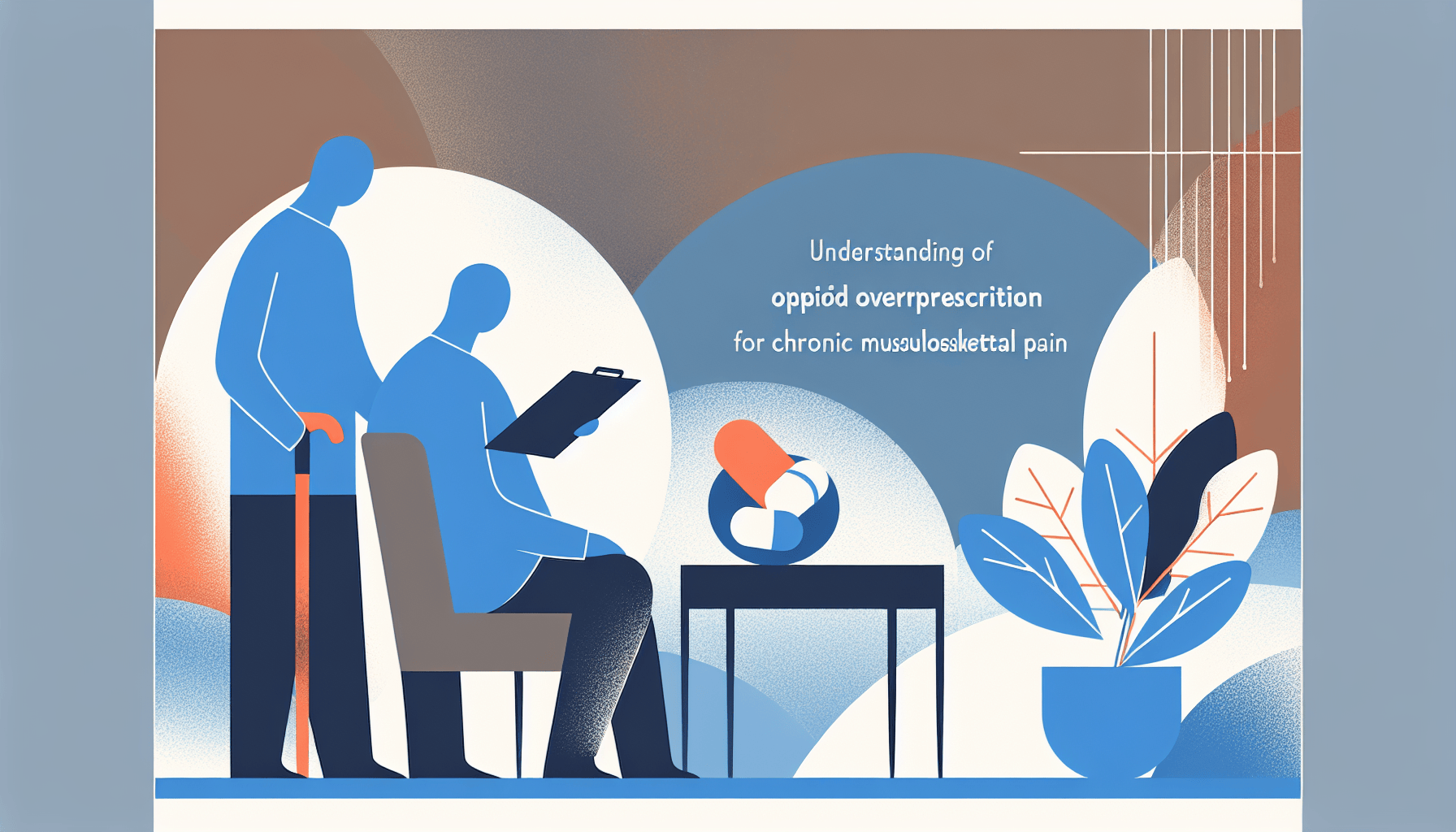Can I Take Zepbound a Day Early?
Key TakeawaysZepbound is a once-weekly injectable medication for weight management and obstructive sleep apnea (OSA) linked to obesity.Taking Zepbound a day early is [...]
Read More
Medically reviewed by Abhijit Bhattacharyya | MD, PhD, MBA, Tufts University School of Medicine - Miami, Florida on June 30th, 2024.
Chronic musculoskeletal pain is a common condition that affects many people worldwide. Unfortunately, a study published in The Journal of Pain in December 2019 revealed that doctors have been overprescribing opioids for this type of pain, despite the known risks and the availability of safer alternatives.
Researchers analyzed data from a survey conducted between 2007 and 2015 and found that doctors more frequently prescribed pills, either non-opioid or opioid, rather than recommending other treatment options, such as:
Physical therapy
Counseling
Other nondrug interventions
At patients' first visits, doctors most often prescribed:
Non-opioid painkillers (40.2%)
Opioids (21.5%)
Counseling, nonpharmacological treatments, and physical therapy

The overprescription of opioids can lead to several serious consequences, including:
Increased risk of addiction
Overdose
Other health complications
The study's findings are particularly concerning because they directly contradict the recommendations of experts, including those outlined in the CDC Guideline for Prescribing Opioids for Chronic Pain.
Instead of relying on opioids, experts recommend several alternative treatments for managing chronic musculoskeletal pain, such as:
Counseling and behavioral therapy
Nondrug interventions (e.g., massage, acupuncture)
Non-opioid pain medications (e.g., acetaminophen, NSAIDs)
Creams/gels with pain meds and cannabis formulations can help with pain
The study authors emphasize the need for improved education among healthcare providers to ensure that patients receive the most appropriate and effective treatments for chronic musculoskeletal pain. It is important to note that the study period (2007-2015) preceded much of the recent work and advocacy aimed at reducing opioid prescriptions, so the situation may have improved since then.
By raising awareness about the risks of opioid overprescription and promoting safer alternatives, we can work towards better pain management and improved patient outcomes. If you are experiencing chronic musculoskeletal pain, talk to your doctor about the most appropriate treatment options for your individual needs and preferences.
Key TakeawaysZepbound is a once-weekly injectable medication for weight management and obstructive sleep apnea (OSA) linked to obesity.Taking Zepbound a day early is [...]
Read MoreKey TakeawaysZepbound is an FDA-approved medication for chronic weight management in adults with obesity or overweight, and for moderate to severe obstructive sleep apnea [...]
Read MoreKey TakeawaysZepbound is a once-weekly injectable medication that supports weight loss by activating hormone pathways regulating appetite and digestion.After the first dose, [...]
Read More